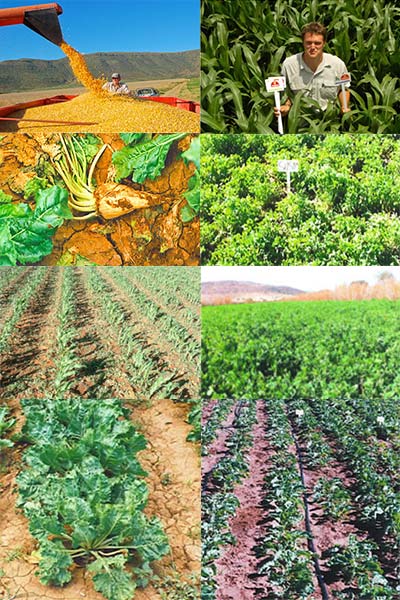Seed wholesalers
Seed wholesalers
Distributor of maize seed
Distributor of all vegetable seeds.
Providers of birdseed.
Providers of grazing seed.
Variety of pastures seed:
Perennial Rye-grass
Annual Rye-grass
Extensive grasses
Lucerne: Various varieties.
White clover, Red clover
Annual clover.
And all other grass seeds that are available in South Africa.
Wil jy saai …
Wil jy maai …
Unique pastures mixture
5 in 1:
This is a unique grazing mixture of five different grasses in one mixture. A unique mixture for big and small livestock.
7 in 1:
A unique mixture for big and small livestock but it includes clovers as well.
Grazing mixture
The oldest grazing mixture of Cradock seed is 17 years old and until today it is grazed to the maximum and it is still 100% like the first year of establishment.
It consists of a mixture of tried seed crops. The packaging is known as the 7 in 1 or 5 in 1 mixture, it is a mixture of fescue, perennial ryegrass, annual rye, cocksfoot,
red clover and white clover.
Tall fescue, which is the basis of the mixture, is a moderate, perennial grass that almost all over South Africa, mostly under irrigation (this requires 800mm rainfall) are used. The life expectancy is largely dependent on climate, soil type and management.
The oldest Cradock seed pastures are 17 years old.
Tall fescue, especially the new improved cultivars in moderate conditions remain green throughout the year and grazing can continue. Previously negative traits are bred out so it’s tastier, more digestible and also safe for use throughout the year.
As a grazing crop, it is easy to manage. Tall fescue mixture establish the easiest in the fall, in February down in cooler areas and as late as May in warm regions.
By adding a small amount of perennial ryegrass into the mixture, grazing can be quicker, usually within eight weeks their can be feed supply.
The cocksfoot in the mix is more digestible than fescue and improves the quality of the pasture. It thrives with fescue, but is known to dominate the pasture when drought occurs.
The white and red clover in the mixture increases the quality of the pasture significantly. White clover needs a year or two to establish strong,
while red clover is much faster to get started.
Clover is safe from the perspective of skuimopblaas in animals until
it covers about 40% of the pasture.
Clover prefers an open grass stand. For successful long-lasting pastures mixture you must take soil sample before planting, consult with Cradock Seed Merchants. For quality grazing throughout the year, clover is a must.
For the successful establishment of the pasture mixture, a fine and firm seedbed must be prepared so that optimal contact between the seed and the soil can ensure better moisture intake by the seed.
The seed mixture can be establishment by a Planter or hand held seed spreader. In both cases the land ought to be rolled after planting so that the seed can come into good contact with soil to promote good germination.
The planting depth should not exceed 20mm to the extreme 30mm.
Seed can be mixed with fertilizer in the seedtray, as long as it is not exposed to the fertilizer for long periods. The fertilizer to be used should not contain too much nitrogen (N). It is also important that the seed will not come in to contact in the soil with fertilizer with high nitrogen content, as it can burn the seedlings during germination.
It is essential to ensure that the clover seeds are treated with the appropriate Rhizobium bacteria. The bacteria settle on the roots of the clover to bind atmospheric nitrogen for the benefit of the crop. Without it, the clover does not do well.
Under normal conditions, the seedlings should germinate within 14 to 21 days after planting.
This light grazing serves mainly as stimulation of young plants and promote future growth.
It is preferable that the pasture will be grazed on a rotational basis and is not used continuously. This means that when it is ready for grazing (about 200mm to 250mm), livestock should be placed on the pasture so that it could be eaten in a short period, preferably less than three days. Then, the livestock can be withdrawn until the pasture is ready for use again.

